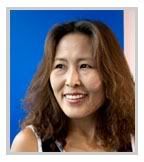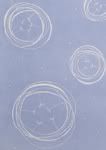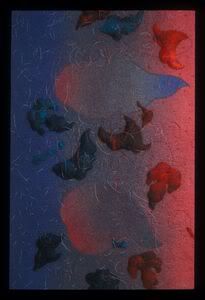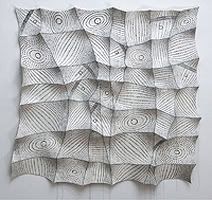Edwin Rubenstein President of ESR Research: Economic Consultants, who writes for Vdare and has developed the very useful "VDARE.com American Worker Displacement Index", has a recent article up called: "Did Immigrant Economists Sink the U.S. Economy?"
This article is an eye-opener on how a particular type of foreigner can make lasting changes in a particular discipline. In this case, how Asian students, with their low-level English language skills caused the removal of history and psychology courses in economics and had them replaced for mathematically-oriented, abstracted, ones. Rubenstein writes:
Gone was the economic history course that exposed students to market failures and the importance of psychological factors—what Keynes dubbed "animal spirits"—to a prosperous economy.I don't want to reproduce Rubenstein's whole article here. It is worth reading. But his point is that one of these mathematically-oriented economists, a Chinese man educated in Canada, came up with an equation that:
"proved" that the risk of an investment grade mortgage defaulting could be estimated with precision, independently of the risk that other—say, sub-prime mortgages—would default.Rubenstein continues:
Apologists point out that the traders, not Li and his fellow quants, are the ones who lost billions for Wall Street firms last year. That may be technically true. But when traders sit in front of their computer screens and click the mouse, they are responding to the prompts derived from some complex equation.Now, for my part of the story!
An influential Toronto textile designer, and associate professor of design at the Ontario College of Art and Design (OCAD), is a Korean immigrant named Chung-Im Kim.
 |
"designer" and associate
professor at OCAD
I was a student in several of her classes. We tried, in her classes, to draw out her extensive knowledge on: silk painting; gouache techniques for reproducing designs; insights and examples of textile prints and designs.
Eventually, we had to give up on a lot of these. Her ambition, I later understood, was to destroy the textile design section of the program and to revert it to simply "textile art", an amorphous discipline which was all about self-expression, relying not on history, past accomplishments and skills, but on what you can "create" yourself.
Kim is part of a faculty that includes other textile “experts” so the blame on the declining discipline cannot land fully on her. But, she dominated the field when I was there around 2000-2003, with an exhibition there and a commission here, and with an array of skills. She was the dynamic faculty in her program, and could have had full leverage on its direction.
I remember one of her excuses was lack of English. Yet, when it came to paid and personal projects, she was able to secure whatever she needed.
At that time, I was going part-time, and paying for my studies (and expensive material costs) while working full-time. This was probably a God-send, since my classmates were stuck with her all day, every day.
I got the basic gouache painting technique with repeated cajoling on my part for her to teach me independently. I learned as much as I could, leaving her full-time students baffled at how I acquired my skills. I knew more in my part-time studies than they did, some of them having been there four years by then.
I got so interested in the field, that I did my own historical and cultural study of the field. Thank God for libraries. I discarded the “self-expression” part of her teaching method, and studied textile designs from the ancient world up to the mid-twentieth century.
So, what has happened to Kim? Well, she is still in the faculty there, which has an impressive selection of courses ranging from “Fibre Design, Constructed Form” to “3-D Structures in Design – Wearable Form.” One course description says: “[Students] will be encouraged to discover their personal voice in this expressive medium.”
Here are two courses that she teaches:
Fibre: Surface Design/Print:And
This course introduces students to surface design as it applies to fabric and other materials. Emphasis is on understanding and developing design concepts, repeat pattern structure and silkscreen printing techniques on yardage scale.
Fibre: Surface Design/Pattern:Here is the dismal outcome of what I presume is a student's work influenced (taught) by Kim during these two courses. These pieces were selected for the Material Arts and Design gallery for the class of 2007:
Directed at fibre students, the course would also be of interest to students who are interested in the graphic application of repeat imagery such as wallpaper or carpet design.
 |  |  |
This kind of presentation is not unusual. I went to a graduating class presentation in 2004, a year after I left, to see what the work was like. One of my classmates had one of the most depressing senior theses I have ever seen. She set up a whole room as a living room, and covered everything, the walls and floor included, in white. The furniture was covered in white sheets. Her statement clearly was that she didn’t learn anything, which was more honest than the student who presented those doodled flowers as part of her repeat design.
So, if textile design is Kim’s way of earning her income as an associate professor at OCAD, what exactly interests her?
Abstract or abstracted “artistic” works. This has always been her method. One of the first pieces of hers which I saw at an exhibition looked like a crescent moon growing into a full moon. But it wasn’t. There was no full moon, and the crescent was more of a flattened oval shape. When I asked her, rather bluntly I admit, what happened to the moon, it set the stage for her mistrust of me for the rest of our interaction.
Here is another piece. But what is it? Leaves? Maple leaves? It looks like that’s what she’s trying for, just like her “moon”, but can’t quite get there.
 |
Textile "art" by Kim
I‘ve had a theory on this for a long time. I think she is unable to connect to nature, to the landscape, to a concrete reality, because of her extreme discomfort at her presence here in Canada. She cannot accept Canada as a real, concrete place, so anything she designs will be an abstracted, geometric rendition. She is the ultimate immigrant.
Rather than use design, and textile design, as a way with which to connect with a place, she has reverted to the hollow center of self-expression. And all that comes out are strange abstractions or distortions of reality.
Here is her latest – a glorified doodle parading as textile art - which she calls "Dawn." Notice the distorted sun and horizon lines, once again revealing her dislike of nature. To give the work a little credit, though, it resembles the op art pieces of the 1960s. But, those years were not the most artistic, although people enjoyed the inventiveness and abstracted geometry that the artists played around with.
 |
Which brings us right back to the beginning of this post. If immigrants can only produce for us abstracted and distorted thoughts, equations and designs, without any context or content, as Rubenstein writes, why should we let them run and consequently dismantle our important institutions?